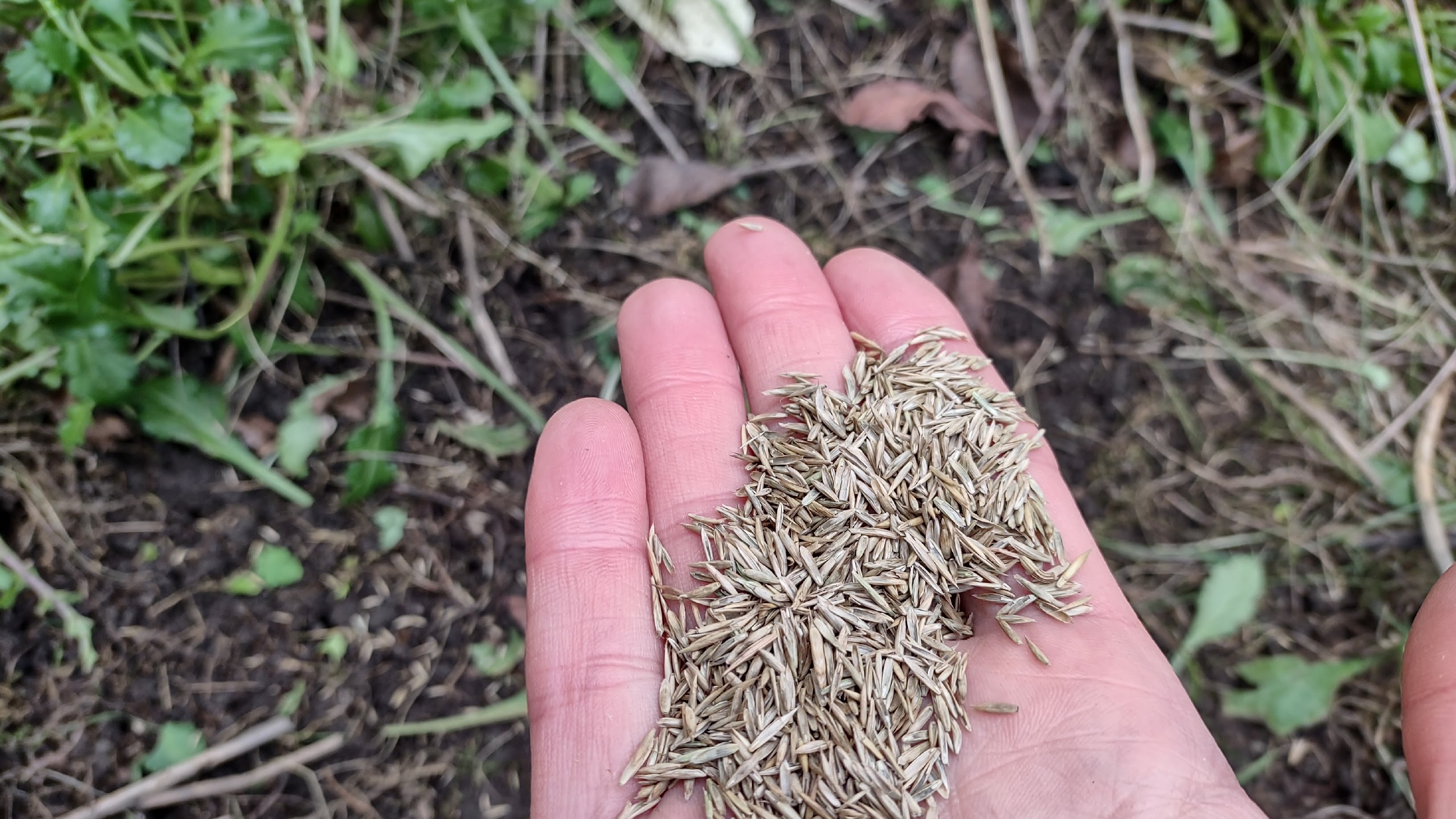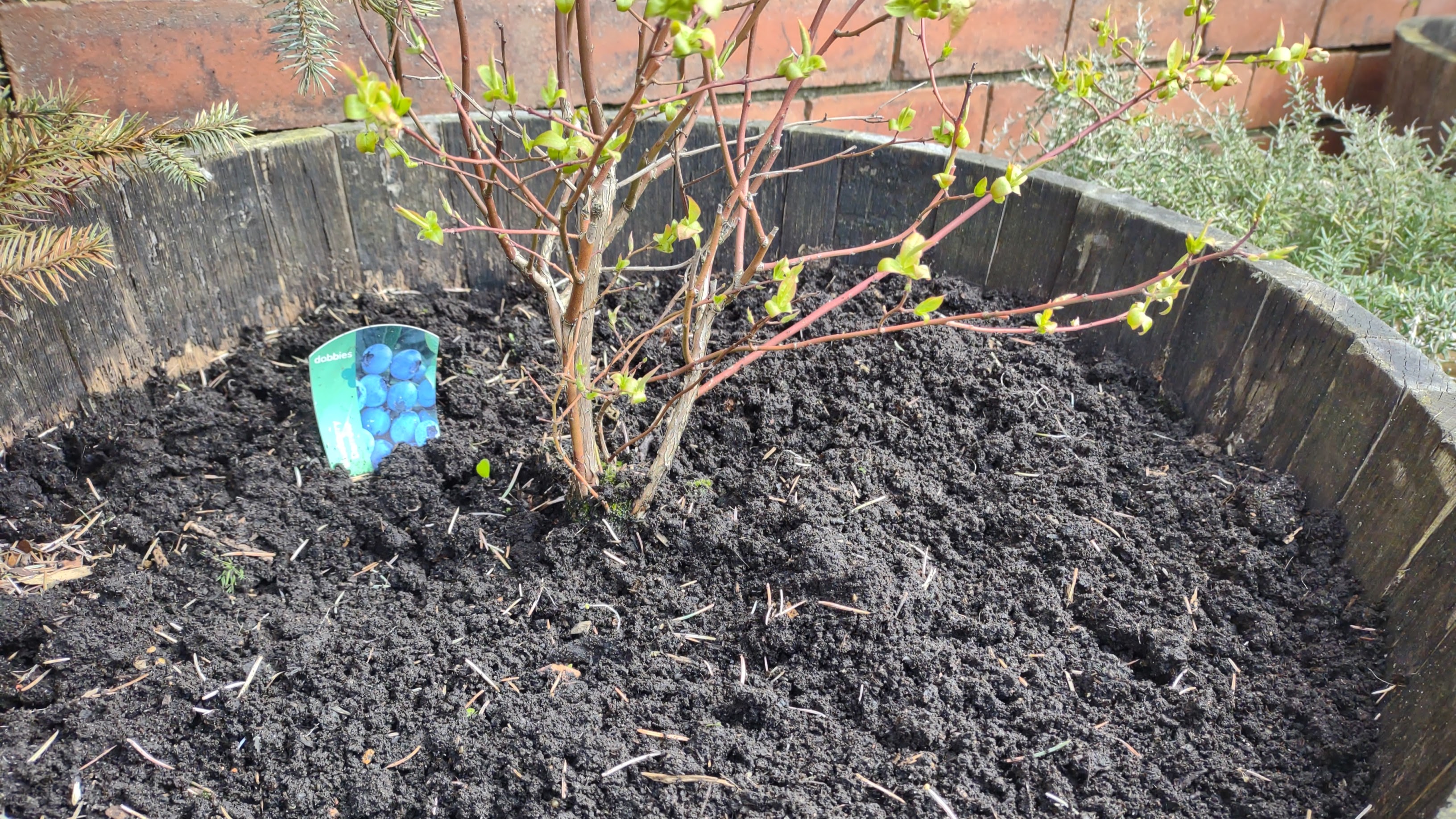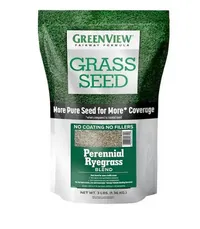How to prepare the yard for spring — 7 tips for seasonal success
Take these simple steps today to help prepare the yard for spring.

Preparing your yard for spring is one of the great joys of the gardening year. Now’s the time to clear out debris left over from winter, prime your plants for successful growth, and prepare the space for months of enjoyment – whether you’ll be entertaining family and friends with your best gas grill, or using the yard as your private oasis.
In this guide, we’ll take you through some simple steps to prepare yard and garden spaces for a beautiful spring and summer. Read on to find out how to prepare the yard for spring that will do good for plants, soil and the yard space itself.
How to prepare the yard for spring
Expect some expert advice on preparing your lawn for spring, courtesy of Nick Wren, a Merchant specializing in Fertilizer and Seed at The Home Depot.
“The arrival of warmer weather marks the beginning of spring lawn care and maintenance to ensure your yard looks its best,” says Nick, whose advice will feature throughout the lawn-related guidance in this article.

Nick Wren is a Merchant specializing in Fertilizer and Seed at The Home Depot. With over 2,300 stores across North America, The Home Depot is the world's largest home improvement retailer.
1. Collect fallen leaves
If you followed our steps to preparing your yard for winter, you might have left some fallen leaves as a mulch on top of your garden beds, or on top of the potting mix in plant pots and other containers.
The leaves will have done a great job of keeping plant roots warm and delivering nutrients to the soil, over the colder months. But it’s now time to remove the leaves, as this will give young plants access to water and the sunlight they need for photosynthesis.
You can easily gather up fallen leaves by hand (preferably while wearing gardening gloves), or using a spring-tined rake. If you’re collecting leaves from a place where there are living plants, be very gentle – you wouldn’t want to pull up healthy plants along with the dead leaves.
Sign up to receive the latest news, reviews, buying guides and deals direct to your inbox
Some people use a leaf blower to move fallen leaves, although the author of this article doesn't believe this is necessary.

2. Overseed the lawn
It’s likely that your lawn will have some bare patches at this time of year. This can happen when individual grass plants die during the harsh winter conditions, while others survive.
To ensure those bare patches are filled before the summer, it’s a good idea to overseed the lawn at the start of spring. This will give the new grass plenty of time to grow during mild or warm weather.
Basically, you’ll need to mow the lawn, dethatch the grass and remove weeds, then scatter grass seed over the bare patches and water the lawn. For more detailed instructions, read our guide on how to overseed a lawn.
According to The Home Depot’s Nick Wren, choosing the right type of grass seed will be important to your lawn’s success.
“Pick the grass seed that matches the climate and your yard’s sun exposure. For example, ryegrass seed, either in perennial or annual varieties, grows in the sun or shade in cooler regions. Meanwhile, shade grass seed can grow in limited sun in all regions,” says Nick.
Greenview 3 lbs. Fairway Formula Grass Seed Perennial Ryegrass Blend | $19.99 at Home Depot
This perennial Ryegrass blend is ideal grass seed for quick lawn growth. It's highly recommended for heavy traffic areas, and is a good choice for compacted soil.
Your method of applying grass seed is also important. Spread seeds too thin, and there won’t be enough new grass to fill the bare patches, while applying too many seeds will cause the new grass plants to compete with each other for finite resources.
“Using a broad spreader like the Scotts Turf Builder EdgeGuard Mini Push Broadcast Spreader Holds up to 5,000 sq. ft. for Seed, Fertilizer, Salt, Ice Melt ($47.97) will help to evenly distribute your seed for good seed-to-soil contact,” Nick advises.

3. Gather dead plant matter
Similar to fallen leaves, dead plant matter such as stems, flowerheads and roots can limit young plants’ access to sunlight, water and nutrients, as well as cluttering the garden space. So, gather up any dead or dying plant matter to make way for new growth.
It’s sometimes hard to tell whether a plant stem is alive, before its buds become obvious in the spring. If you’re not sure what a certain plant is, or you don’t know how it should look at this time of year, we suggest you leave it undisturbed until later in the year. The plant might turn out to be dead – or it might bloom beautifully!

4. Fertilize garden beds and lawns
Plants can’t just be fertilized at just any time of year, as the addition of fertilizer during times when the plant is under stress can actually worsen plant health. For example, at the height of summer, when plants often experience high temperatures or drought, fertilizer can encourage build-up of salt in plant tissues such as the roots, leading to health issues.
Early spring tends to be a great time of year to fertilize your garden beds and lawns, as most plants grow comfortably during this period.
You can use various types of fertilizer to nourish your plants, including liquid fertilizers, soluble powders, and slow-release granules that deliver nutrients into the soil over several months.
“Liquid fertilizer works and absorbs quickly, so you may need to reapply every few weeks or as directed on the label,” says Nick.
“Granular fertilizer absorbs into the ground more slowly and may require less frequent application than liquid fertilizer.”
Some plants benefit most from special types of fertilizer. For example, ericaceous fertilizer is ideal for acid-loving plants like blueberries and azaleas. Choose fertilizers to suit your plants, and apply the products according to the specific instructions given.
Lawns require a special approach to fertilizer application, as Nick explains:
“In addition to keeping your yard looking lush and green, lawn fertilizer can strengthen your lawn so it’s more resistant to weeds and diseases. Apply fertilizer about three weeks after the grass starts greening or following the first two or three mowings.
“Warm-season and cool-season grasses have different fertilizer needs, so determining the kind of grass you have will help you find the best lawn fertilizer to use.”
5. Pull up weeds
As plants start to grow, you may notice some uninvited guests growing in your garden beds, containers and lawn. Weeds often look harmless, but they reduce the levels of moisture, space and nutrients available to the plants you’re trying to grow. When weeds become large enough, they can also limit the availability of light for photosynthesis.
So, for the sake of your plants, it’s best to pull up weeds early in the spring. Rather than just snapping off the above-ground parts of a weed, try to dig up the whole plant, roots and all. This can usually be done easily using a one-handed garden fork — although you might need to use a two-handed garden hoe to lever out stubborn weeds. Avoid digging any deeper than the plant itself, as this may bring ungerminated seeds to the surface.
Pulling up weeds is a more sustainable gardening method than using weedkiller, which can harm other living things as well as weeds.

Before weed removal...

After weed removal.
6. Start watering
Reviews
Whirlpool 24" Stainless Steel AI Dishwasher Review
Napoleon TravelQ PRO285 Portable Gas Grill review
Dreame L40 Ultra Robot Vacuum Cleaner and Mop review: almost hands-free cleaning
GE Profile Smart Mixer with Auto Sense review: a powerful, thorough mixer
Echo eForce DPB-2500 review: a leaf blower as a snow removal tool?
DPAS-2100 + Pro Paddle Attachment review: a new way to remove snow this winter?
Midea MAD53109APK 5.5QT Air Fryer review: a small, simple, and highly effective option
Eureka J15 Pro Ultra Robot Vacuum review: hands-free cleaning for busy families
Most of our readers will see decreased rainfall through the spring and summer, depending on their local climate. Meanwhile, many plants need more water as the weather warms up.
So, now’s the time to start watering your plants and lawn more frequently. We recommend setting yourself reminders to water the plants regularly throughout the week, as it’s easy to forget this important task when life is busy. You could use a watering can, hosepipe, your best lawn sprinkler or best drip irrigation system, depending on your budget, local regulations and preference.
Do bear in mind that some plants are harmed when they are watered during peak sunlight. On very hot spring days, try to do your watering in the morning, when the sun is weaker.
Drought-loving plants like succulents in cacti and succulents don’t need to be watered as frequently as most other plants. Learn the needs of all the plants in your yard, and adapt your watering routine to suit them.

7. Pressure-wash driveways and decking
To get your yard looking its best, ready for spring and summer enjoyment, you might want to consider pressure-washing surfaces such as driveways and decking.
Pressure washers use a high-powered water jet to remove dirt, debris and discoloration from hard surfaces. If you’re going to use one of these devices, we suggest you choose one of the best pressure washers for domestic use. Commercial-grade pressure washers are sometimes too powerful to be used safely at home.
Read the instructions in your pressure washer’s manual (or its app, as is the case with the excellent Kärcher K3), and identify the right settings and/or spray attachments to use for each type of cleaning task, before you pull the trigger. Always start with a relatively low pressure setting, to avoid excessive impact on surfaces.

Follow these simple steps and you'll be ready to start mowing the lawn again in spring with your best lawn mower.

Pete has reviewed hundreds of gardening products for titles including TopTenReviews, Ideal Home and the London Evening Standard, as well as writing articles on diverse topics for other publications such as The Guardian and BBC Good Food. Pete loves spending time in his yard – although, having just read The Day of the Triffids by John Wyndham, he is regarding his plants with a newfound suspicion.

